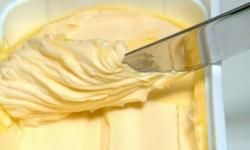Knowing which side your bread is buttered on may help you avoid getting it on your shirt sleeve. However, if you are unlucky enough to forget where the butter is, don't fret. By learning how to get butter out of clothes, you can breathe easy next time hunger strikes.
In this article, you'll learn how to deal with stubborn butter or margarine stains, which are actually the hardest stains to remove. Whether you're dealing with delicate fabrics or solid materials, remembering these tips will help you get rid of that greasy spot.
Advertisement
